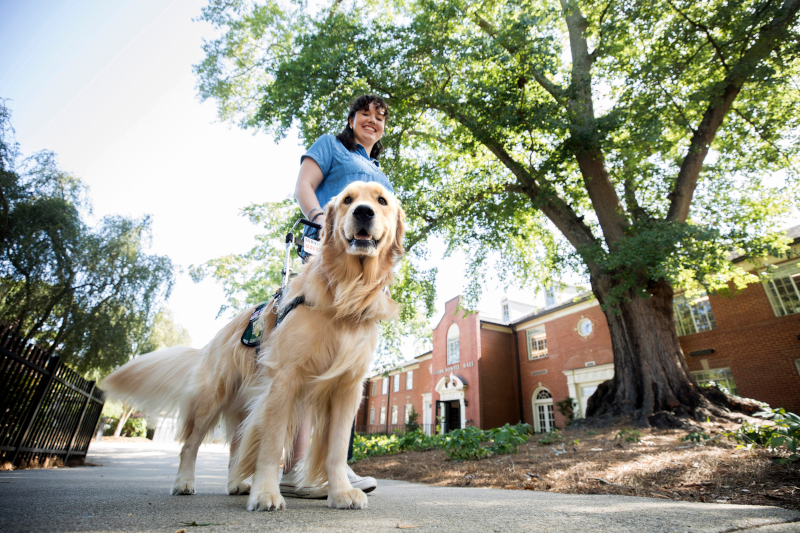Create belonging through universal design
Universal design is a broad term. We typically think of it from an architectural standpoint: like ramps or curb cuts created because of federal legislation for accessibility. And yet each of us gratefully uses them when we push a stroller. We also angrily feel their absence when we travel in a new city with luggage. Even though ramps and curb cuts were designed for those with wheelchairs or walkers, the entire community universally benefits from them.
The next time your phone buzzes with a notification message, you may thank universal design. Texting was originally created for people who are deaf and hard of hearing. Now we have a mega-infrastructure benefiting hundreds of thousands and addressing all types of community needs.
When it comes to our UGA community, the Disability Resource Center (DRC) is constantly thinking of new universal design concepts. Big and small innovations that not only benefit students registered with DRC, but all students who engage with campus facilities, classrooms, and programs— from awesome tech gadgets that help students with color blindness differentiate red from green to partnering with professors on creating multiple ways for students to demonstrate their knowledge. “Universal design excites me in that not only is this specifically supporting our student population with disabilities, but can positively impact all students,” explained Erin Benson, Director of the Disability.
As staff and faculty, we all agree that we want every bulldog to feel a part of our UGA family. “When I think about belonging as a division, we want all students to know that we simply don’t think they exist here on campus,” shared Benson. “We want them to feel like we really want them here. We’ve thought about what their potential needs could be, and we’ve done the best that we can to create a space where they can see themselves.”
DRC recently launched its new art maker space—an innovative, freeform conference space. It is part of the well-being hubs Student Affairs has created across campus, with a specific vision of creating a space where everyone— from student organizations to class meeting space to staff development— can gather to cook up new ideas.
Everything is intentionally designed to maximize creativity and accessibility. The back wall is lined with art supplies so if someone prefers working with something tactile, they can collage, color, or paint an answer to a prompt. The shape of the table consciously went from a traditional rectangle to an oval. This shape not only makes it physically easier to join, but it makes it easier to engage one another in group discussions. Everyone can quite literally be seen and heard. DRC has also found it altered collaborative energy in bigger ways. From interviews with past participants, many discussed how much more comfortable they felt speaking up because there was no head at the table. There was no longer a power differential. As a result, more voices were heard, and richer ideas were generated.
As we lead our different efforts across campus, sometimes our mind jumps to hunting for big accessibility projects. However, many times it is the little actions that we can each do in our respective areas that emphasize to our students, “We really thought about you, and we want you to be a part.”
Students or campus partners interested in using Disability Resource Center’s artmaker space are encouraged to contact Erin Benson to learn more.

